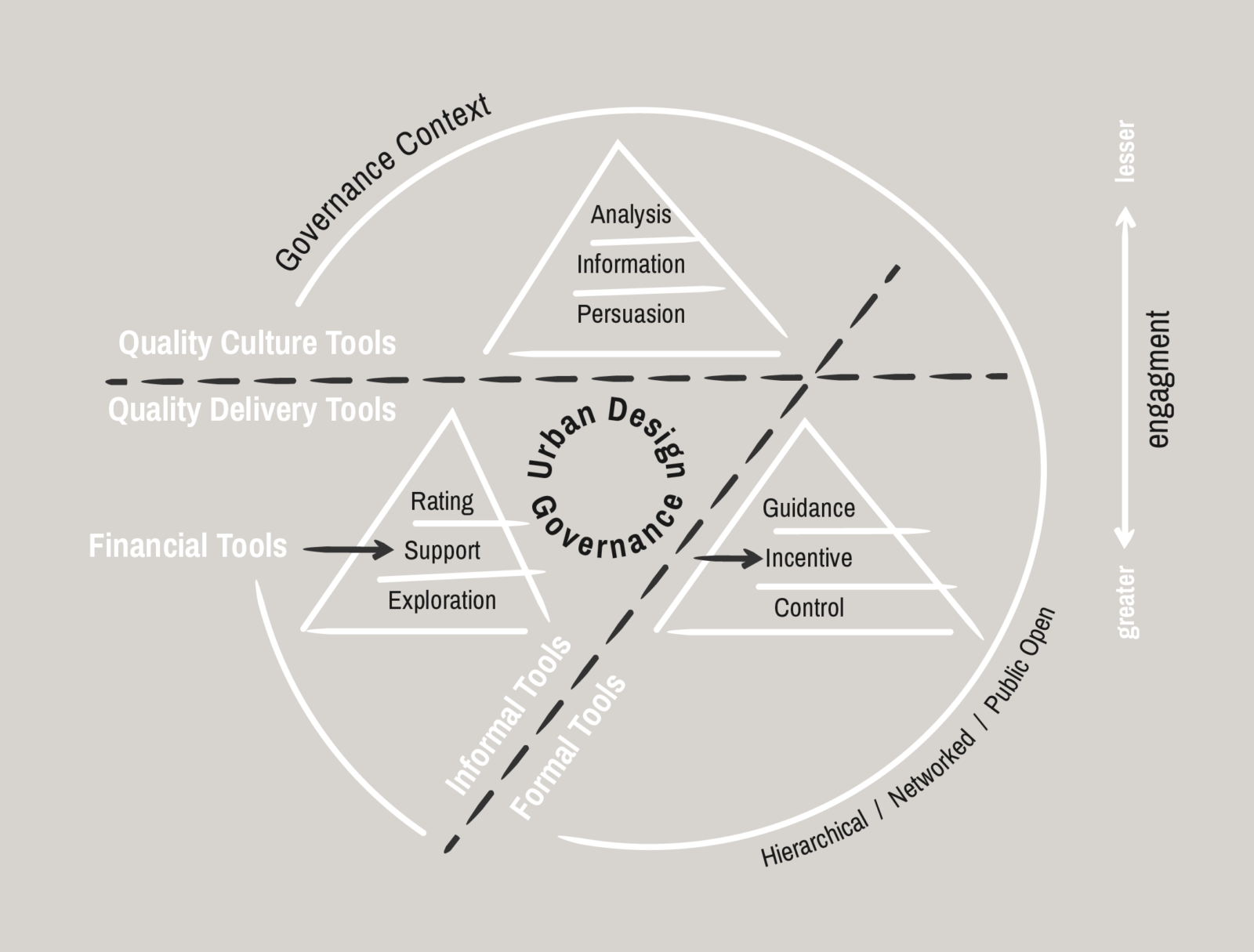Slyfox Urban Tool Design Neoprene

Typology of tools diagram
Towards a European typology of tools for urban design governance
Urban design governance can be defined as an intervention in the means and processes of designing and managing the built environment in order to shape both processes and outcomes in a defined public interest. It achieves this by intervening in the decision-making environment of development stakeholders (whether public or private) in order that their decisions have a clear place-based quality dimension.
Shaping decision-making
Throughout Europe, local, regional and national administrations have established sophisticated urban development control systems that are meant to ensure the compliance of urban development with basic urban design qualities. Underpinning these are a wide range of motivations ranging from protection of the historic built fabric to the promotion of urban areas to attract investment, and encompassing a wide range of societal, environmental and aesthetic motivations between. The systems define the rules through which development interests can express their aspirations and protect their interests through urban design. This is the realm of urban design governance and will vary across the continent just as the motivations (values) and local processes will also vary.
For every built environment intervention, the line-up of stakeholders, the leadership and the power relationships are different, although the design remains a common and constant means through which the built environment is negotiated and renegotiated over time. It is not, however, universally prioritised. Within this context, the governance of design is primarily concerned with establishing and shaping the decision-making environment within which choices about the design of particular projects (large or small) are later made. In other words, it is not concerned with actually designing projects, but instead with setting the parameters within which others design. Normatively this would imply establishing a culture where the quality of place is routinely prioritised.
Influencing processes and outcomes
Globally, a wide range of tools and processes are deployed to steer public and private actors towards specific outcomes in terms of the design of the built environment. The choice of which tools to use is not politically neutral but instead reflects the diversity of the political spectrum, from ultra-liberal uncontrolled abdication to the private sector, to centrally-planned detailed guidance and control. Many European states sit somewhere in between. Not only do nation-states have their processes of urban design governance, but so (often) do individual regions, cities, and municipalities within each country.
We can divide the tools of design governance in 2 key ways:
• Quality culture vs. Quality delivery tools:
Some tools focus primarily on influencing the broad culture in which the quality of design is prioritised whilst others concentrate on shaping actual projects and places. The former seek to establish a positive decision-making environment in which consensus gradually builds that a better quality built environment delivers place value and is worth striving for. The latter steer those decision-making processes in a more focused manner, helping to ensure that from intervention to intervention, design quality is delivered.
• Formal vs. Informal tools:
The most widely used tools focus on formally 'directing' decision-making processes relating to the design of projects and places. In doing so they use the hard powers of the state which are generally obligatory to use and to follow. Others informally 'influence' decision-making from the broad culture of design to the specifics of projects. These use the soft powers of the state to encourage and cajole development actors, but in a discretionary (non-obligatory) manner.
These classifications create three categorisations of tools:
I) informal quality culture tools,
II) informal quality delivery tools,
III) formal quality delivery tools.
In total, this leads to 9 tool types, of which 6 are informal, although it is important not to be overly rigid in how the classification is used. In reality, many tools have both culture and delivery implications, and the division between the formal and informal tools of the state are not hard and fast. A classification is instead a relational tool, designed to understand and relate broad types, rather than to strictly classify.
Within each category, there is also a transition from lesser to greater engagement, from more passive to more active engagement with stakeholders and/or the specifics of projects and places. This implies that tools at the base of each category are more hands-on (and often more forceful) in their application. Again, whilst this may generally be the case, it will not always be so as the transition will not always be as clear cut as the diagram suggests.
Slyfox Urban Tool Design Neoprene
Source: https://urbanmaestro.org/tools/
Posted by: fullerseethe79.blogspot.com

0 Response to "Slyfox Urban Tool Design Neoprene"
Post a Comment